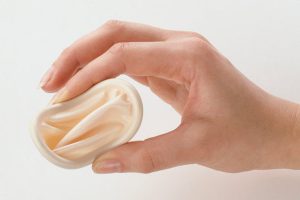
If you are sexually active and you want to avoid having children at this stage of your life, you need to practice some type of birth control. There are plenty of methods to choose from and you should take into consideration all the risks and advantages of each method before deciding which one to use.
While most people think of contraceptives as something that applies only to females, there are a few options for men as well.
Women, especially, have many questions about the numerous types of birth control options available to them; can I use an IUD if I want children in the near future? Do those “matchsticks” really work? How effective are condoms, really?
We are going to take a look at the top 10 methods most commonly used by men and women, as well as their effectiveness.
1. Birth Control Pills
These are perhaps the best known and most widely used birth control method. There are numerous types of pills and they are all at least 99% effective against pregnancy when used as directed. Your doctor will be able to advise you about which ones may be best for you.
- Combo Pills: These are the most common and are known for easing hot flashes or helping those who have irregular periods.
- Progestin only: These contain NO estrogen and are perfect for those who smoke or who have a high risk of blood clots.
- Extended Cycle Pills: These prevent pregnancy while allowing women to have a period only once every three months
When you take an oral contraceptive pill, it thickens the mucus in your vagina, making it more difficult for sperm to get into your uterus. These pills also contain hormones to prevent ovulation.
2. The Vaginal Ring
This is a flexible ring made of plastic that delivers small doses of estrogen and progestin. Women place it in the vagina, and then remove it one week per month to have a regular period.
Several studies, including the 2010 World Health Organization (WHO) scientific update on risk assessment and women’s reproductive health, have concluded that long-term vaginal ring usage does not increase the risk of endometrial, ovarian, or uterine cancer or cause other adverse effects.
3. Condoms (For Men)
Worn properly, condoms protect against not only unwanted pregnancies but against sexually transmitted diseases, including herpes and HIV.
Many types of condoms are available for purchase, including latex and polyurethane. Lambskin condoms, however, do not offer protection from STD’s.
Some new styles of condoms that were FDA-approved in 2011 and 2012 have an improved dual layer; these are said to have a longer lifecycle and a lower likelihood of HIV transmission compared to other latex condoms. These newer condoms also have new lubricants, and the most recent condom models also have more powerful spermicidal or lubricant-based emergency contraception that isn’t used in the production of latex condoms.
4. Female Condoms
These are inserted deep in the vagina, similar to the way diaphragms are. These can be placed inside as long as 8 hours before sex.
Female condoms are intended to enhance sexual satisfaction and reduce sexually transmitted infections (STIs). They also prevent pregnancy by maintaining an open vaginal cavity and preventing sperm from entering. They also reduce the risk of HIV infection because they keep the fluids surrounding the cervix (cervical mucus) fluid-free.
5. IUD
The IUD is an intrauterine, copper device a doctor surgically implants which prevents sperm from reaching eggs via hormones. IUD’s are perfect for women who have already had at least one child. This is a long-lasting device, only requiring replacement every 10 years.
It is highly effective at preventing pregnancy.
6. Diaphragm
This dome-shaped, rubber device covers the cervix so sperm is prevented from meeting eggs. It must always be used with a spermicidal gel and women need to be fitted for the first time at their doctor’s office.
7. Vasectomy (Men)
This minor surgical procedure is perfect for men who do not want any more children. A vasectomy stops sperm from reaching semen. Vasectomies can be reversed, but doctors recommend not having one until you have had at least one child.
When done correctly, vasectomy may be much more effective than all other methods including birth control pills. According to the American Society for Reproductive Medicine, about 5 percent of all men ages 15 to 59 have experienced a vasectomy, with a typical reversal rate of 60 to 70 percent.
8. Birth Control Patch
The patch contains hormones that, when placed on the skin, are slowly released into the body and are good for 7 days.
Unfortunately, hormones do have some side effects such as bleeding, nausea, vomiting, and breast tenderness. This method does not require a prescription and is perfect for those who don’t want to take pills daily or use an IUD. However, the effectiveness of birth control patches is not guaranteed and you will need to remember to reapply them each week.
This type of method can be used as a back-up method or in addition to any other form of birth control. If you are considering birth control patches, check out the best ways to reduce your risk of ovarian cancer.
9. Birth Control Implants
Commonly called Matchsticks because of their similar size, implants are placed under the skin of the upper arm. They are 99.9% effective and last for 3 years.
A 2009 report by the Centre for Reproductive Rights that examined health claims associated with birth control implants found that they were an estimated 67 times more likely to contain harmful substances than condoms.
10. Cervical Cap
Similar to a diaphragm, the cervical cap does what the name implies. It must be used with a spermicidal gel and it must stay in place for at least 6 hours after sex.
The cervical cap covers your cervix, stopping sperm from joining an egg. This can prevent pregnancy, but can also lead to an infection of the cervix. This method is only 91% effective, which has lead to a decline in its use.




